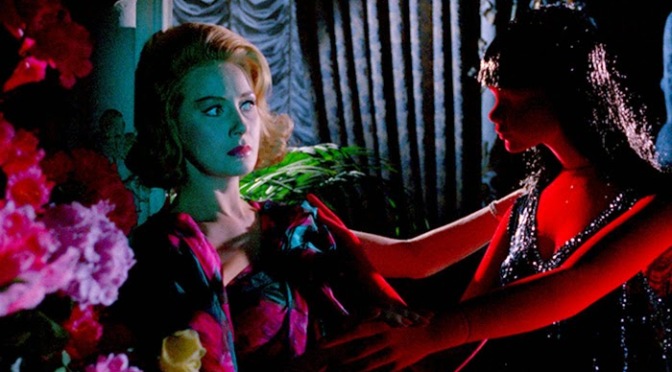
Mario Bava’s Blood and Black Lace (1964), or in Italian 6 donne per l’assassino, follows a series of brutal murders at the Christian Haute Couture. The villain hides behind a mask and with every clue comes comes more carnage. Contessa Cristiana Cuomo (Eva Bartok) and her stable of models are in jeopardy; it’s a race to see if the killer will be unmasked or if everyone will die by the killer’s hand.
From the opening credit sequence it’s clear that Mario Bava is essentially inventing the giallo film. The stark backgrounds, bold colors and expressionistic lighting imbue the opening sequence with both mod and gothic sensibilities. All of Blood and Black Lace feels like some baroque nightmare. The red velvet mannequins, the exquisite gowns, and the Hammer Horror blood make Blood and Black Lace feel like some Vincente Minnelli nightmare.
Bava’s often operatic visual stylizations, the gore, and the commodification of the female form all went on to become the calling cards of the giallo genre. Looking at Blood and Black Lace it’s easy to see Bava’s impact on directors such as Dario Argento and Lucio Fulci (to name but the most well known). It’s also fairly evident that filmmakers as diverse as Fritz Lang, James Whale, Alfred Hitchcock, and Vincente Minnelli have all had a role to play in Bava’s aesthetic development. It’s a dense lineage with Mario Bava at the center as a kind of historical turning point in how thrillers were made, how they were perceived, and what they were allowed to do.
The historical importance of Blood and Black Lace cannot be overstated. One sees other filmmakers paying homage to Bava’s first masterpiece all of the time. Would there be “The Blank” in Dick Tracy (1990) if Bava hadn’t invented the look? Would we even have any of Brian De Palma’s films? Luckily unlike so many historically valuable films Blood and Black Lace is, even today, a whole lot of fun.
